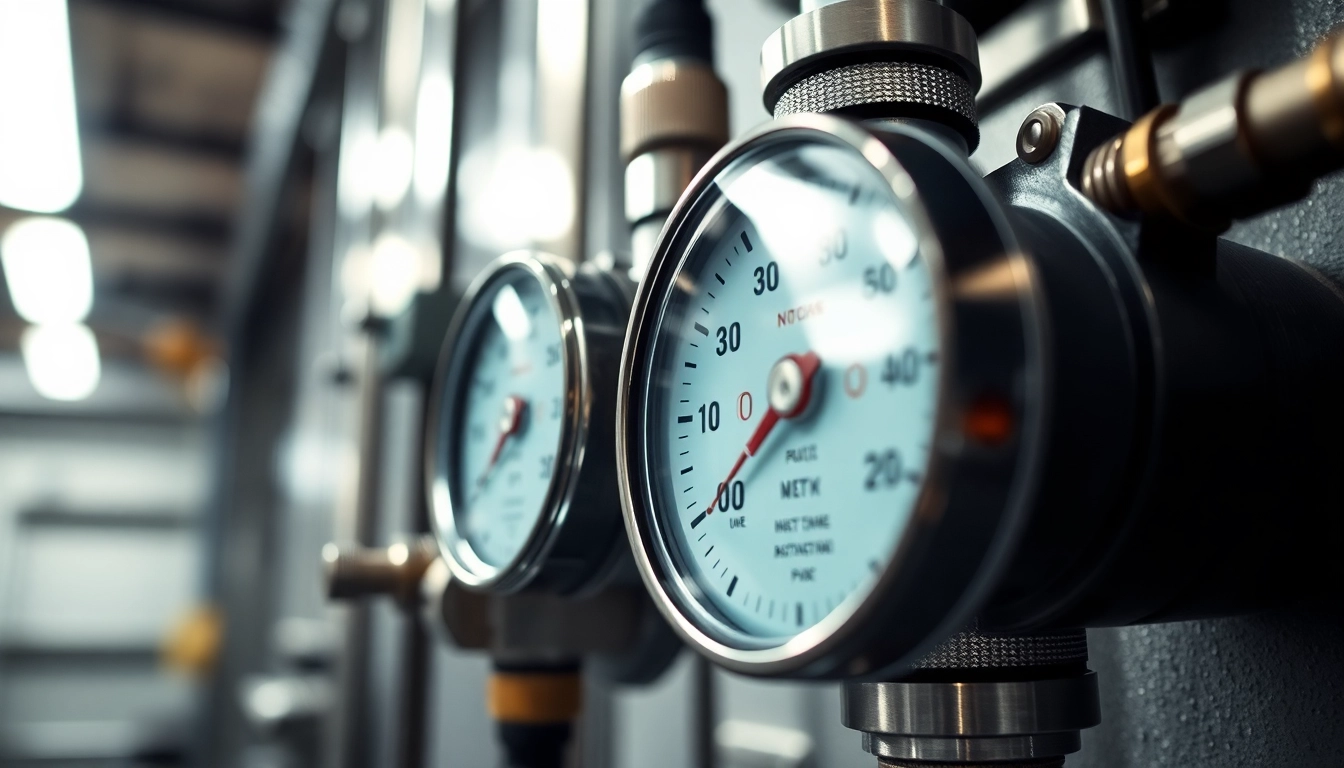Selecting the Right Nitrogen Regulator
Nitrogen regulators play a crucial role in various industrial and commercial applications where nitrogen gas is utilized. The ability to control the pressure and flow of nitrogen is essential for optimization and safety in processes ranging from food and beverage dispensation to HVAC systems. If you’re considering the acquisition of a nitrogen regulator, understanding your specific needs and application will significantly influence your selection process.
Understanding Your Needs and Applications
When deciding on a nitrogen regulator, the first step is to ascertain the primary application for which you will be using it. Common applications include:
- HVAC Systems: Nitrogen is frequently used for pressure testing and flushing HVAC systems to remove contaminants.
- Refrigeration Maintenance: Similar to HVAC, maintaining and servicing refrigeration systems often requires nitrogen.
- Food and Beverage Dispensation: Nitrogen is used to create a sealed environment that preserves the quality of food and beverages.
- Industrial Processes: Various manufacturing processes utilize nitrogen for inerting, purging, and pressure control.
By pinpointing your needs, you can choose a nitrogen regulator that is tailored to your specific applications, ensuring efficiency and safety.
Factors to Consider When Choosing
Several key factors should influence your choice of nitrogen regulator:
- Pressure Rating: Nitrogen regulators are available with different pressure ratings which should match the requirements of your applications.
- Flow Rate: Consider the flow rate capacity to ensure that it meets the demands of your process.
- Material Compatibility: Make sure that the materials of the regulator are compatible with nitrogen and any other gases involved in your application.
- Regulator Type: Single-stage and dual-stage regulators serve different purposes and provide varying degrees of control over pressure stability.
- Brand Reputation: Opting for reputable brands known for quality and durability will influence long-term performance and reliability.
Assessing these factors ensures you select a nitrogen regulator that best serves your operational requirements.
Popular Brands and Models
Some of the well-regarded brands in the nitrogen regulator market include:
- Victor: Known for their robust construction and reliability, Victor regulators are extensively used in industrial applications.
- Smith: Offering precise flow regulation, Smith nitrogen regulators are favored in both manufacturing and HVAC applications.
- Uniweld: Compact designs from Uniweld ensure they are suitable for tight spaces in various applications.
- McMaster-Carr: Provides a wide variety of nitrogen regulators to suit many needs and applications.
Choosing a model from a trusted brand can significantly impact performance and maintenance, providing peace of mind in your selection.
How Nitrogen Regulators Work
Understanding the operational principles and components of nitrogen regulators is essential in maximizing their functionalities and ensuring safe operations.
Principle of Operation Explained
A nitrogen regulator operates by reducing the high-pressure nitrogen gas from a cylinder to a lower, controlled pressure suitable for application. The basic principle relies on a diaphragm that moves in response to the pressure of the gas, adjusting the flow as necessary. The regulator maintains a consistent output pressure, even as the inlet pressure fluctuates, ensuring steady gas delivery.
Key Components of a Nitrogen Regulator
Key components of a nitrogen regulator include:
- Inlet Port: Where the nitrogen gas enters from the gas cylinder.
- Pressure Adjustment Knob: Allows the user to set the desired output pressure.
- Pressure Gauge: Displays current pressure in the system facilitating monitoring.
- Outlet Port: Where the regulated nitrogen exits to the application.
- Diaphragm: The critical part that responds to pressure changes, regulating flow.
Each of these components works together to ensure that nitrogen is delivered in a controlled and safe manner.
Benefits of Using Nitrogen Regulators
Utilizing nitrogen regulators brings numerous advantages:
- Accuracy: They enable precise control over the nitrogen flow to meet specific process requirements.
- Safety: Proper regulation reduces the risk of hazardous conditions in pressurized systems.
- Efficiency: Optimizes nitrogen usage, minimizing waste and lowering operational costs.
- Versatility: Nitrogen regulators can be tailored to various applications across different industries.
These benefits underscore the importance of selecting the right nitrogen regulator for your specific needs and applications.
Common Applications of Nitrogen Regulators
Nitrogen regulators find usage across various sectors, leveraging the properties of nitrogen gas effectively.
Industrial Uses and Processes
In industrial settings, nitrogen regulators are crucial for:
- Purging: N2 is used to purge systems of oxygen and moisture that can lead to chemical instability or spoilage.
- Inerting: Providing an inert atmosphere for processes that are sensitive to oxidation.
- Pressure Testing: Testing the integrity of vessels and pipelines through pressure maintenance.
The versatility of nitrogen in these applications makes the nitrogen regulator an indispensable tool in the industrial toolbox.
HVAC and Refrigeration Applications
Nitrogen is essential in HVAC and refrigeration for:
- Leak Testing: Pressure testing ensures that no leaks are present in HVAC systems before recharging with refrigerants.
- Flushing: Removing non-condensables or contaminants from systems ensures optimal performance.
- Purging: Creating a clean environment that prevents moisture or pollutants from entering the system.
Nitrogen regulators ensure the safe and efficient operation of equipment in these critical applications.
Food and Beverage Industry
In the food industry, nitrogen serves crucial roles such as:
- Packaging: Nitrogen gas is often used in packaging to displace oxygen, extending shelf life.
- Dispensing Draft Beverages: Carbonated drinks and nitro coffee use nitrogen for dispensing and pressure control.
- Inerting: In applications where spoilage is a risk, an inert nitrogen environment is essential.
Using nitrogen regulators in food applications drastically enhances product stability and quality.
Safe Operation of Nitrogen Regulators
Ensuring safe operations with nitrogen regulators is paramount in preventing accidents and maintaining equipment longevity.
Important Safety Precautions
When operating nitrogen regulators, consider these safety precautions:
- Regular Inspection: Check for leaks, damage, or wear at regular intervals.
- Proper Training: Ensure all operators are trained in safe handling practices for nitrogen gas.
- Ventilation: Ensure workspaces are adequately ventilated to prevent nitrogen buildup, which can be hazardous.
Adhering to these precautions can significantly enhance safety while using nitrogen regulators.
Maintenance Tips for Longevity
Routine maintenance can extend the lifespan of your nitrogen regulator. Key maintenance practices include:
- Cleaning: Keep the regulator clean from dirt and debris to ensure optimal performance.
- Seals and Connections: Regularly check seals and connections for wear or damage, replacing them as necessary.
- Pressure Calibration: Periodically calibrate the regulator to ensure accurate pressure settings.
Proactive maintenance will ensure your nitrogen regulator continues to perform effectively.
Troubleshooting Common Issues
Common issues with nitrogen regulators can include:
- Inconsistent Pressure: Check for leaks in hoses, or problems within the diaphragm.
- Flow Restriction: Inspect for blockages in the outlet or inlet ports.
- No Flow: Verify that the cylinder is not empty and connections are secure.
Addressing these issues promptly facilitates continuous and efficient operation.
Buying a Nitrogen Regulator: Cost and Availability
Understanding the financial considerations involved in purchasing a nitrogen regulator can assist in making a wise investment.
Price Ranges Explained
The pricing of nitrogen regulators can range significantly based on factors such as brand, features, and specifications. Typically, costs can vary from:
- Entry Level: $50 – $150 for basic models suitable for light usage.
- Mid-Range: $150 – $400 for professional-level regulators with multiple features.
- High-End: $400 and above for specialized applications requiring advanced performance and durability.
Investing in a more reliable and well-suited nitrogen regulator can lead to long-term savings through increased efficiency and reduced service interruptions.
Where to Purchase Nitrogen Regulators
Nitrogen regulators can be sourced from various places:
- Specialty Suppliers: Industrial gas suppliers or specialty gas equipment providers often have a comprehensive range.
- Online Retailers: Websites like Amazon and manufacturer sites offer options for different brands and models.
- Home Improvement Stores: Some larger hardware and home improvement stores may carry them for DIY applications.
Choosing reliable vendors ensures access to quality products and necessary support.
Understanding Warranty and Support
When purchasing a nitrogen regulator, consider warranty terms and customer support options from the manufacturer. A robust warranty indicates a manufacturer’s confidence in its product. Reliable customer service can help resolve potential issues effectively, enhancing the overall purchase experience.

